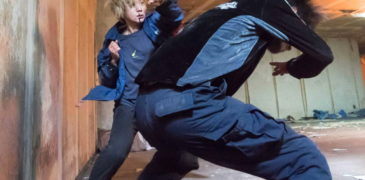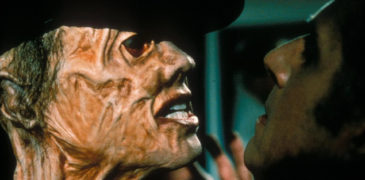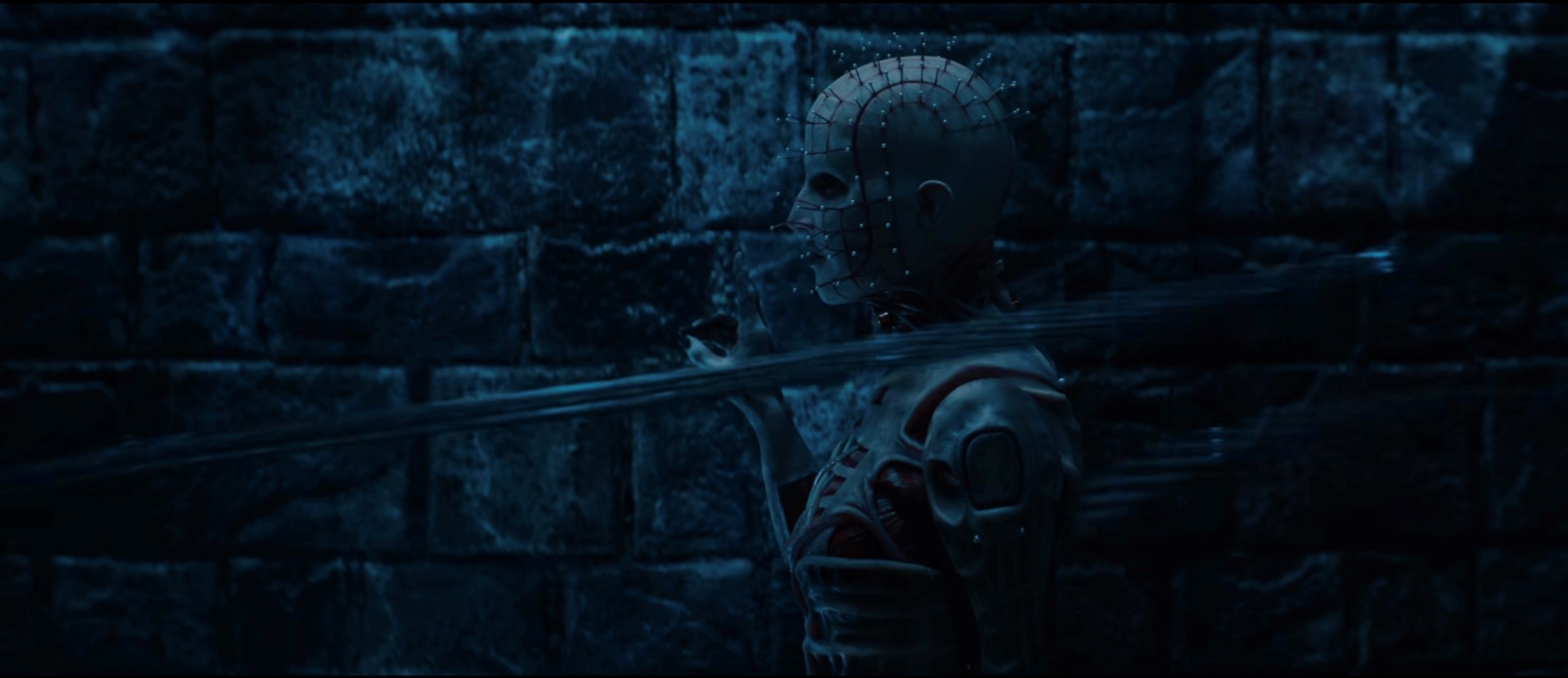
Hellraiser fans rejoiced when the news broke out that Clive Barker would be regaining the U.S. rights to his novella The Hellbound Heart and the film it spawned in December of 2021. This meant that any upcoming Hellraiser projects would need his stamp of approval before going forward after the specified date. After a series of poorly received direct-to-video sequels, this bit of news shed some newfound hope for the resurrection of the franchise. And although a Hellraiser series was announced to be in the works at HBO, the new film directed by David Bruckner was first to complete production.
Bruckner’s Hellraiser follows a character named Riley as she struggles to recover from a drug and alcohol addiction. After an argument with her brother Matt, whose home she has been staying at, she is kicked out and seeks refuge at her lover’s apartment. While contemplating her next move, Riley asserts that she’s tired of being broke and wants a quick way to get out of this rut. Trevor, her lover, convinces her to break into an abandoned storage warehouse with him, where rich art collectors allegedly stored their belongings, and steal whatever expensive items they find. Unfortunately for them, the Lament Configuration—which, unbeknownst to them, is a puzzle box that can be used to summon extra-dimensional beings called Cenobites—is the only item hidden inside the safe they procure. Thinking that the box must be worth a pretty penny, the two of them take it home, blatantly unaware of the horrors they are about to unleash.
One of the most interesting aspects of the film, and certainly one that sets it apart from its predecessors, is the creative liberties taken with the Lament Configuration. Rather than being just a cool-looking prop that opens up without a specific technique, the puzzle box now has six different configurations, each one representing a specific human desire and assigned an eccentric name. Not only that, but each of these configurations activates a blade once completed that cuts the holder, inevitably sealing their fate and flesh to the Cenobites. This was indeed a welcome addition to the lore, giving more layers to the box than any of the previous installments of the franchise have. Not to say that the previous depictions of the device were unsatisfactory, but this certainly upped the ante.
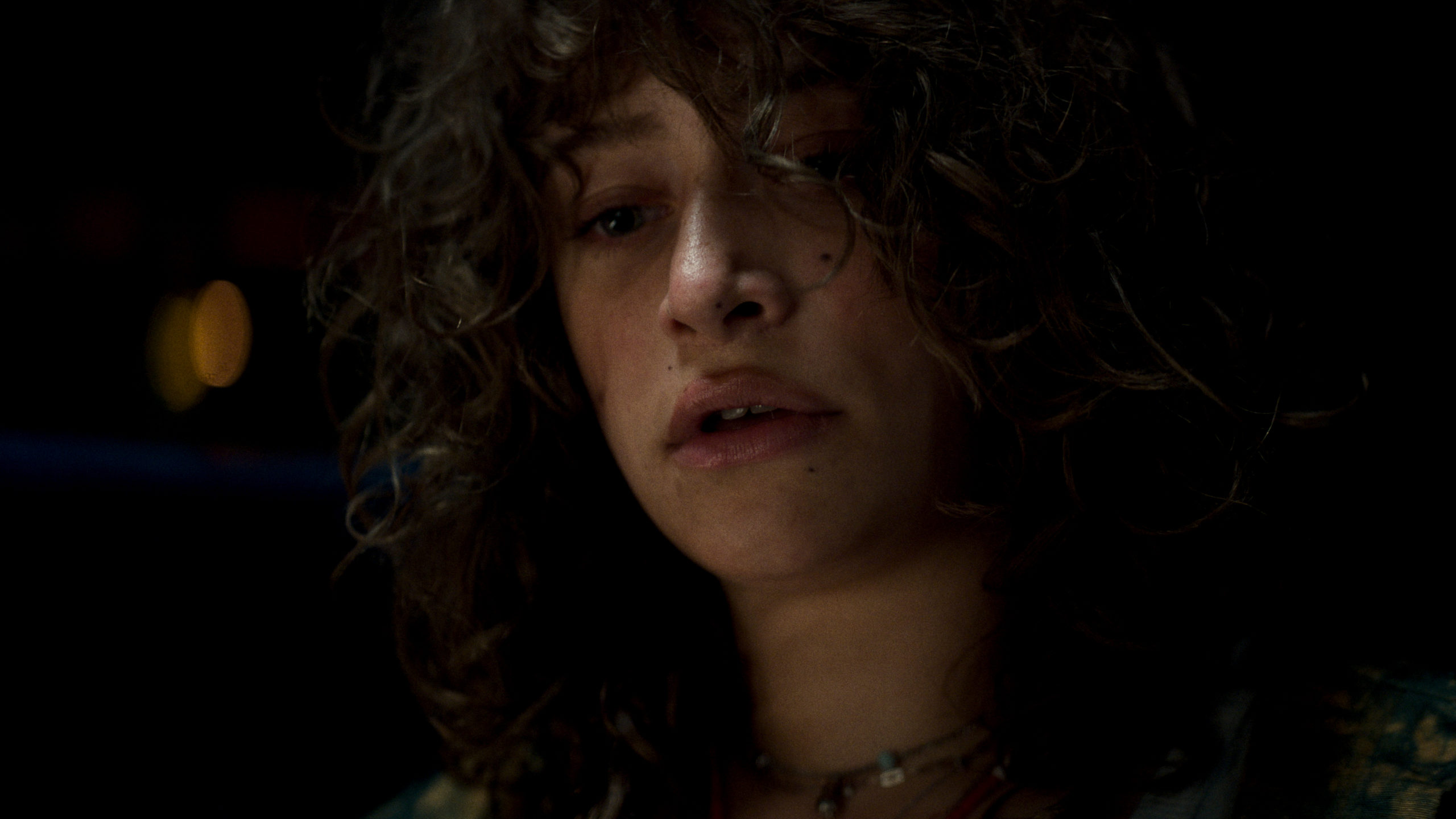
This was not the only creative liberty taken with the franchise, as perhaps the most talked-about creative choice has been casting a female actor as the lead Cenobite, otherwise known as “Hell Priest” or “Pinhead”. One may argue that this was not a creative liberty at all, but rather an attempt to directly honor the description of the character from Barker’s original novella, where they are portrayed as being sexually ambiguous: “Its voice, unlike that of its companion, was light and breathy-the voice of an excited girl.” As it turns out, Jamie Clayton completely nails the role, her dazzling presence demanding your full attention whenever she is on screen. The magnetism of her appearance and her body language is equally matched by her voice, which thankfully wasn’t designed to mimic Doug Bradley’s (the original Hell Priest), but is instead its own daunting rendition of it.
The designs of the rest of the Cenobites, which I’m sure most of you have already seen via online stills, are an adequate dichotomy of grotesqueness and anomalous beauty. Bruckner opted to use practical effects for each of these designs, which is a huge relief to those of us who prefer minimal CGI in our horror films. The gore in the film is more polished than that of the original; we never get anything as memorable and icky as Frank’s resurrection in the 1987 version, but there are still a number of satisfying set pieces sprinkled throughout. Nevertheless, a part of me does wish that they would have implemented the gross-out factor a bit more firmly, but the cleaner carnage does add a distinct stamp to the overall experience.
Whether this film is a reboot or a sequel is not abundantly clear; Bruckner has stated that it’s a new story within the Hellraiser universe, but it’s different enough to be its own standalone iteration. I suppose the best term for it would be the more recently coined “requel”, which revisits the subject matter of the original film but is not a remake or a continuation of its plot. With that said, none of the original human characters make any cameos here, leaving the weight of the film entirely on the fresh blood: the aforementioned Riley, her brother Matt and his boyfriend Colin, their roommate Nora, and Trevor.
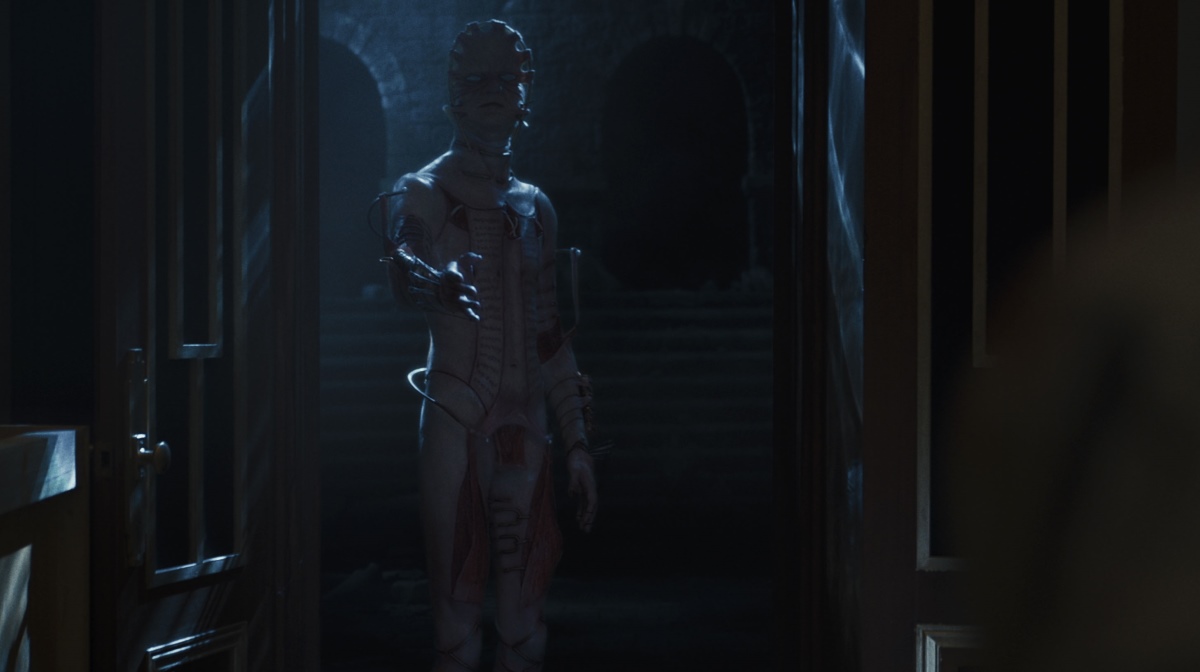
These characters are in a constant state of dismay, arguing and yelling their way through almost the entire runtime. This may turn off some viewers, especially during the first act which mostly focuses on setting everything up, but their volatile behavior more than suits the brooding atmosphere of the rest of the film. Basically, if you prefer that your lead characters are not almost entirely vexing, you may find yourself feeling a bit frustrated. This is a dingy tale of pain and desire that rarely offers any respite.
Although the film was not a complete home run for me—there were two moments early on with the Cenobites that I think could have been excluded to further enhance the impact of their first real appearance—it had plenty of first-rate qualities to offer its viewers. A reconfiguration of Clive Barker’s harrowing vision, Hellraiser (2022) is definitely one of the strongest entries that the franchise has seen in a long time. It works both as an introduction to the universe Barker created and a long-awaited resurrection of a series that I believe has yet to reach its full potential. I would personally love to see Jamie Clayton return to the role in the above-mentioned HBO series, but details of said series have yet to be announced. If this film generates enough positive reaction, the studio would be crazy not to bring her back.
Hellraiser is currently streaming exclusively on Hulu.
More Film Reviews
The Guest Room (La Stanza in Italian) is a 2021 Italian thriller directed by Stefano Lodovichi, making its debut as part of Grimmfest in Manchester UK. Shot in a single… Dead Sushi is a 2012 Japanese splatter horror comedy film, written and directed by Noboru Iguchi, with additional writing from Makiko Iguchi and Jun Tsugita. Known for his over-the-top implementation… Door is a 1988 Japanese psychological horror thriller written and directed by Banmei Takahashi with additional writing from Ataru Oikawa. Beginning his career in Pinku Eiga in the 70s, Takahashi… Minore is a 2023 Greek sci-fi horror comedy, written and directed by Konstantinos Koutsoliotas, with additional writing from Elizabeth E. Schuch. Although mostly known as a visual effects artist who… I didn’t really have a whole lot going during my high school years. I went to class and did stupid hijinks with my friends, but I mostly just watched movies… When I watch a horror movie from the 80’s, I inevitably have the thought of “how the hell did this movie get made?” Don’t get me wrong, there are some…The Guest Room (2021) Film Review – Killing for Company
Dead Sushi (2012) Film Review – Sushi (S)Platter
Door (1988) Film Review – Home Invasion J-Horror [Fantastic Fest]
Minore (2023) Film Review – Greek Sci-fi Horror [FrightFest]
Baby Assassins (2021) Film Review – Moe Moe Kyun!
Phantom Of The Mall: Eric’s Revenge (1989) Film Review – Remastered Slasher For FrightFest

Your typical ghoul next door; film enthusiast, horror fanatic, J-horror nerd, aspiring horror host, and all around geek. Will likely be found cuddling with their cat and reading an old smelly book, or stuffing their face with popcorn at the cinema!


![Door (1988) Film Review – Home Invasion J-Horror [Fantastic Fest]](https://www.grimoireofhorror.com/wp-content/uploads/2023/09/Door-cover-365x180.jpg)
![Minore (2023) Film Review – Greek Sci-fi Horror [FrightFest]](https://www.grimoireofhorror.com/wp-content/uploads/2023/08/Minore-202310-365x180.jpg)
